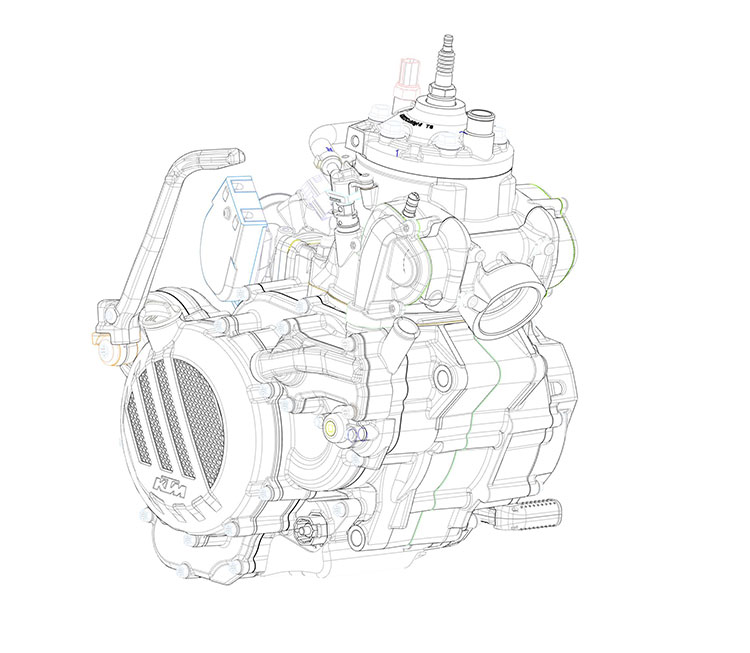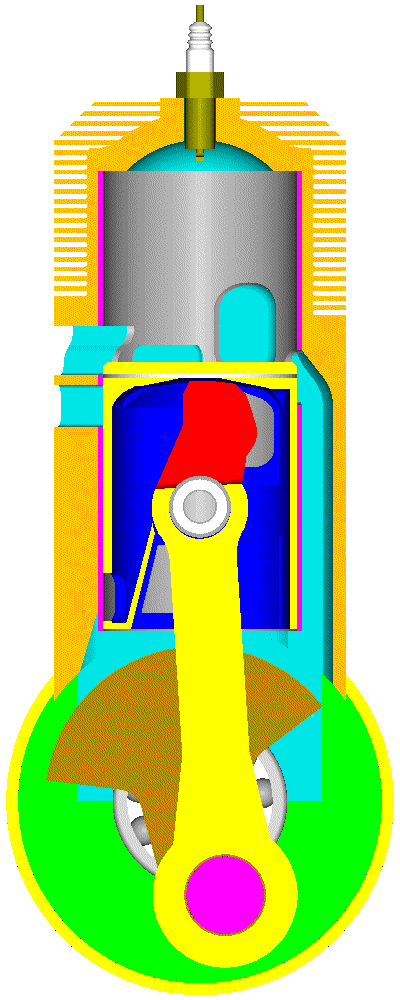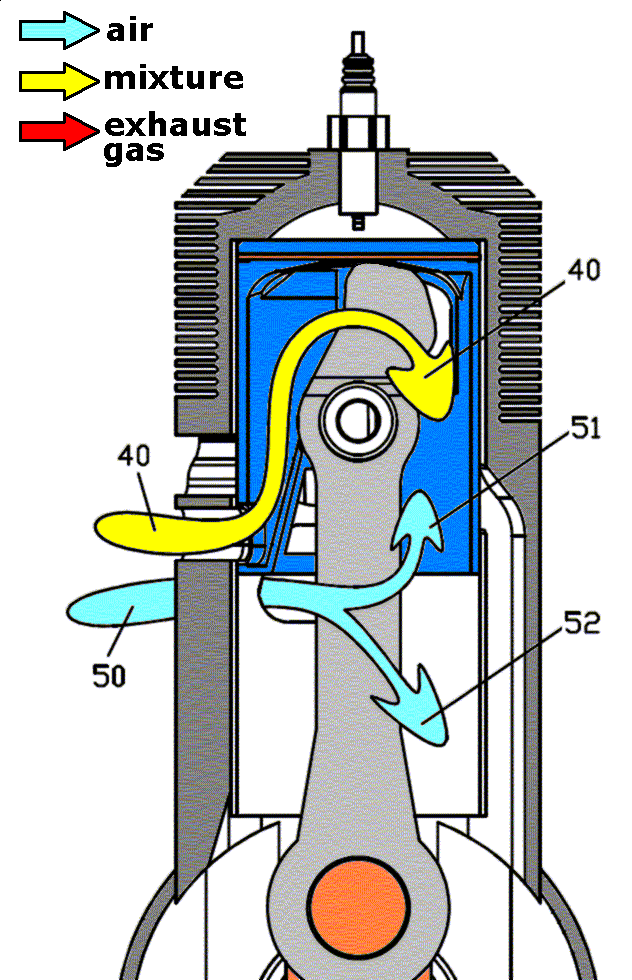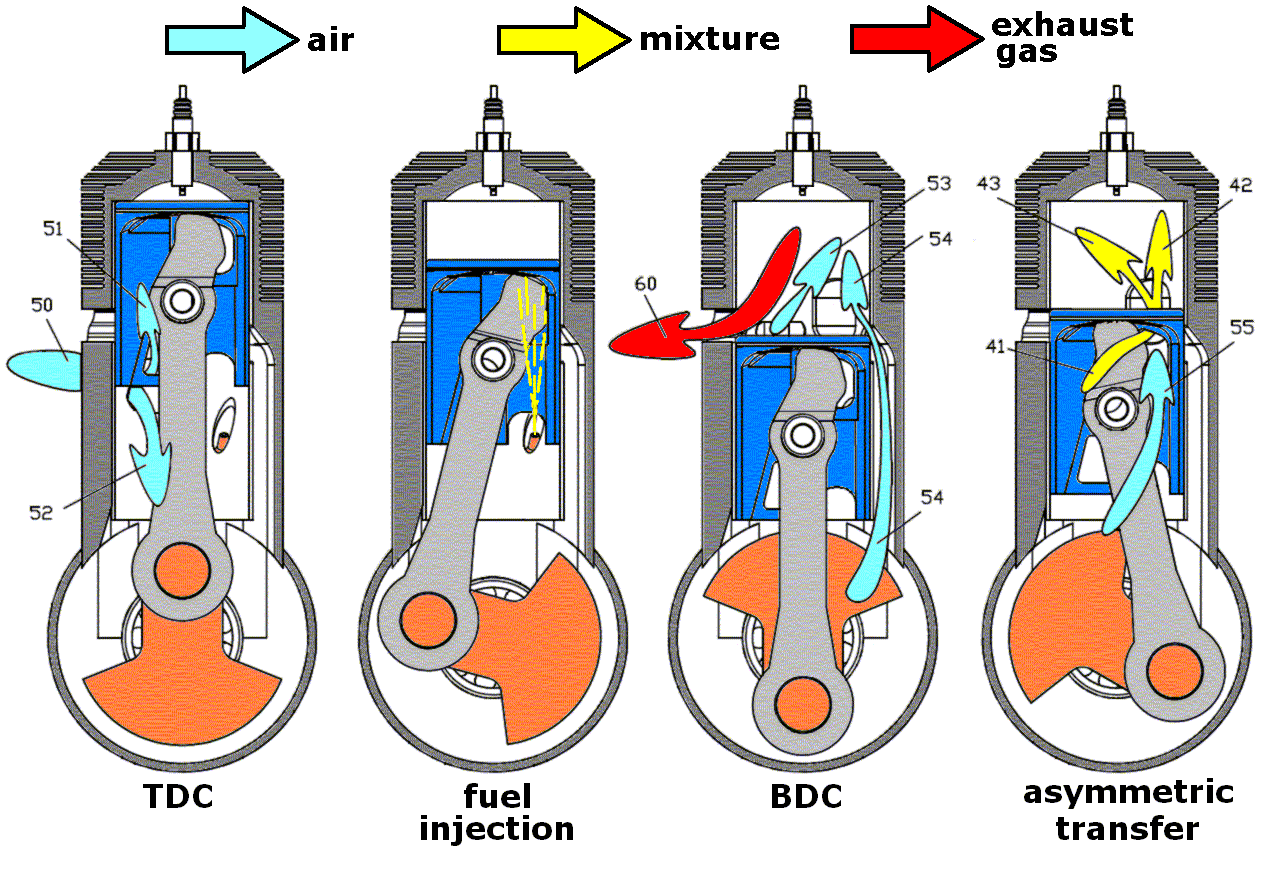Hello Pinger
You write:
“My understanding is that at low (throttled) loads the 2T barely suffers from throttling losses, it is the 4T that is hamstrung by them.
Compare the 'pumps' in question. One operates at between 1.4:1 - 1.6:1 (at best), the other circa 10:1 compression ratios. Hence the difference.”
Quote from
http://www.jhis.co.uk/ICE/Help/ICEHelpWebMain.html :
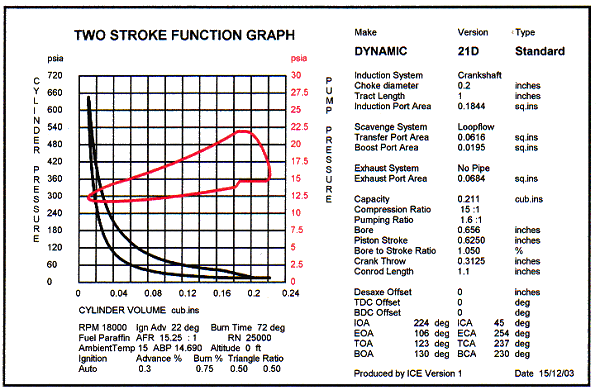
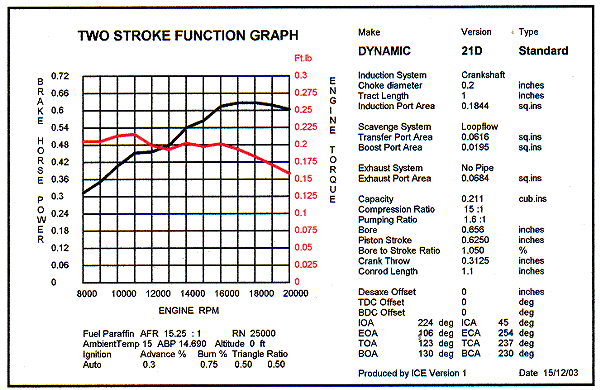
It is for a model engine (0.211cubic inches) at high revs (18,000rpm) and full load (1.6:1 primary compression ratio).
In the following plot (from
http://www.pattakon.com/pattakonPatTwo.htm )
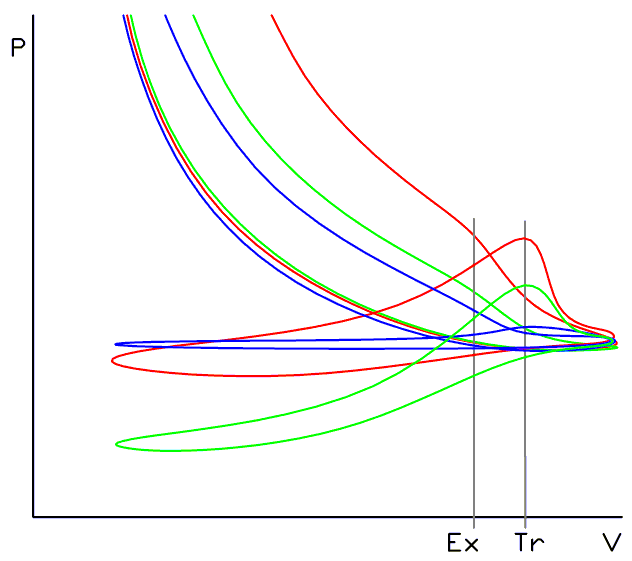
the blue curve is indicative for a PatTwo at light load, the green curve is indicative for a conventional 2-stroke at light load, the red curve is indicative for full load in either case.
The lower “loop” (or side) of the each curve relates with the space underside the piston crown (it is the upper section in the case of the PatTwo; it is the crankcase in the case of a conventional 2-stroke), while the upper “loop” (or side) of each curve relates with the combustion chamber (the cylinder).
The Ex and Tr are where the exhaust and the transfer ports open, respectively.
The pumping losses in a 4-stroke and in a 2-stroke are not proportional to the “relative” compression ratios.
With 10:1 compression ratio the 4-stroke may have lower pumping loss than a similar capacity 2-stroke having 1.6:1 primary compression ratio (the one “pumps” per crankshaft rotation, the other per second crankshaft rotation).
The pressure in the crankcase of the 2-stroke with the 1.6:1 primary compression drops near 0.5bar, while the pressure in the cylinder of the 4-stroke with the 10:1 compression ratio cannot drop below, say, 0.3bar.
Things get more complicated as the “fresh charge” is heated by the surrounding walls:
Quote from
http://www.pattakon.com/pattakonHydro.htm :
“After the intake valve closing, the piston continues to move towards the BDC. The charge (air or mixture) inside the cylinder undergoes an expansion. The expansion causes the charge temperature to drop increasing the heat absorption from the hotter walls (cylinder, piston crown, cylinder head, intake and exhaust valves). After the BDC the piston compresses a hotter charge and restores less mechanical energy than the mechanical energy consumed to expand the charge. “
Thanks
Manolis Pattakos






